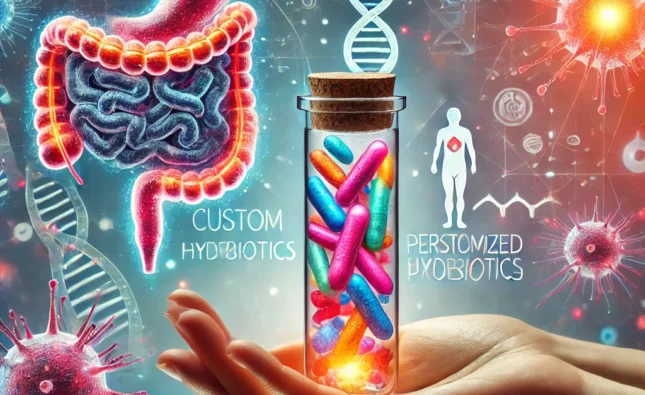
Outline
Introduction
- Gum Disease Kill You
- Importance of Oral Health
- Purpose of the Article
Types and Categories of Gum Disease
- Gingivitis
- Symptoms
- Causes
- Periodontitis
- Symptoms
- Causes
- Aggressive Periodontitis
- Symptoms
- Causes
- Chronic Periodontitis
- Symptoms
- Causes
- Systemic Disease-Associated Periodontitis
- Symptoms
- Causes
- Necrotizing Periodontal Disease
- Symptoms
- Causes
Symptoms and Signs of Gum Disease
- Early Signs
- Advanced Symptoms
- Signs Indicating Severe Disease
Causes and Risk Factors
- Poor Oral Hygiene
- Smoking and Tobacco Use
- Genetic Predisposition
- Medical Conditions
- Medications
- Hormonal Changes
- Stress and Diet
Diagnosis and Tests
- Clinical Examination
- X-rays
- Periodontal Probing
- Bacterial Culture
- Genetic Testing
Treatment Options
- Non-Surgical Treatments
- Scaling and Root Planing
- Antibiotics
- Surgical Treatments
- Flap Surgery
- Bone Grafts
- Soft Tissue Grafts
- Laser Therapy
- Home Remedies and Lifestyle Changes
Preventive Measures
- Proper Brushing Techniques
- Flossing Regularly
- Regular Dental Check-ups
- Diet and Nutrition
- Avoiding Tobacco
- Managing Stress
Personal Stories or Case Studies
- Case Study 1: Overcoming Severe Periodontitis
- Case Study 2: The Impact of Early Intervention
Expert Insights
- Quotes from Dentists
- Advice from Periodontists
Conclusion
- Summary of Key Points
- Importance of Awareness and Prevention
- Call to Action for Further Education
Introduction
Gum disease, also known as periodontal disease, is a common but serious condition affecting the gums and the structures supporting the teeth. It ranges from simple gum inflammation (gingivitis) to more severe forms that result in major damage to the soft tissue and bone (periodontitis). But can gum disease kill you? This article explores the types, symptoms, causes, risk factors, diagnosis, treatment, and prevention of gum disease, emphasizing the potential systemic impacts that can indeed be life-threatening.
Types and Categories of Gum Disease
Gingivitis
Symptoms:
- Red, swollen gums
- Bleeding while brushing or flossing
Causes:
- Plaque buildup on teeth
- Poor oral hygiene
Periodontitis
Symptoms:
- Persistent bad breath
- Loose teeth
Causes:
- Untreated gingivitis
- Plaque and tartar buildup
Aggressive Periodontitis
Symptoms:
- Rapid loss of gum attachment
- Rapid bone destruction
Causes:
- Genetic factors
- Immune system response
Chronic Periodontitis
Symptoms:
- Inflammation within the supporting tissues of the teeth
- Progressive attachment and bone loss
Causes:
- Plaque and calculus accumulation
- Long-term poor oral hygiene
Systemic Disease-Associated Periodontitis
Symptoms:
- Symptoms consistent with systemic diseases
- Oral signs correlating with the underlying disease
Causes:
- Systemic conditions like diabetes
- Heart disease
Necrotizing Periodontal Disease
Symptoms:
- Severe pain
- Rapid gum tissue destruction
Causes:
- Severe malnutrition
- Immunosuppression (e.g., HIV)
Symptoms and Signs of Gum Disease
Early Signs
- Red, swollen gums
- Bleeding during brushing or flossing
Advanced Symptoms
- Receding gums
- Formation of deep pockets between teeth and gums
Signs Indicating Severe Disease
- Loose or shifting teeth
- Pus between teeth and gums
Causes and Risk Factors
Poor Oral Hygiene
- Infrequent brushing and flossing
- Plaque and tartar buildup
Smoking and Tobacco Use
- Reduced blood flow to gums
- Impaired healing response
Genetic Predisposition
- Family history of periodontal disease
- Genetic markers
Medical Conditions
- Diabetes
- Heart disease
Medications
- Drugs causing dry mouth
- Some anticonvulsants and immunosuppressants
Hormonal Changes
- Pregnancy
- Menopause
Stress and Diet
- Poor nutrition
- High levels of stress affecting immune response
Diagnosis and Tests
Clinical Examination
- Visual inspection of gums
- Checking for bleeding, swelling, and pocket depths
X-rays
- Assessing bone loss
- Identifying hidden issues
Periodontal Probing
- Measuring the depth of gum pockets
- Detecting inflammation
Bacterial Culture
- Identifying specific bacteria causing infection
- Tailoring antibiotic treatment
Genetic Testing
- Determining genetic susceptibility
- Personalized treatment plans
Treatment Options
Non-Surgical Treatments
Scaling and Root Planing:
- Deep cleaning to remove plaque and tartar
- Smoothing root surfaces
Antibiotics:
- Topical or oral antibiotics
- Reducing bacterial infection
Surgical Treatments
Flap Surgery:
- Lifting gums to remove tartar
- Reducing pocket depths
Bone Grafts:
- Replacing lost bone tissue
- Encouraging bone regeneration
Soft Tissue Grafts:
- Covering exposed roots
- Reinforcing thin gums
Laser Therapy
- Minimally invasive treatment
- Reducing bacteria and promoting healing
Home Remedies and Lifestyle Changes
- Saltwater rinses
- Improved diet and oral hygiene practices
Preventive Measures
Proper Brushing Techniques
- Using fluoride toothpaste
- Brushing twice daily
Flossing Regularly
- Removing plaque between teeth
- Preventing tartar buildup
Regular Dental Check-ups
- Professional cleanings
- Early detection and intervention
Diet and Nutrition
- Consuming a balanced diet
- Avoiding sugary snacks
Avoiding Tobacco
- Quitting smoking
- Reducing risk of gum disease
Managing Stress
- Stress-reducing techniques
- Maintaining overall health
Personal Stories or Case Studies
Case Study 1: Overcoming Severe Periodontitis
- Story of a patient with advanced periodontitis
- Steps taken for successful treatment
Case Study 2: The Impact of Early Intervention
- Early detection and treatment success
- Improved outcomes with prompt care
Expert Insights
Quotes from Dentists
- Professional opinions on gum disease
- Emphasis on the importance of prevention
Advice from Periodontists
- Recommendations for maintaining gum health
- Insights on advanced treatments
Conclusion
Gum disease is more than just a dental issue; it can have serious health implications, including the potential to be life-threatening if left untreated. Understanding the types, symptoms, causes, and treatments is crucial in managing and preventing this condition. Regular dental care, good oral hygiene, and a healthy lifestyle are essential in maintaining gum health and overall well-being.
By being proactive and informed, you can protect yourself from the dangers of gum disease and ensure a healthier future. Remember, your oral health is an integral part of your overall health. Take action today and consult with your dental professional to safeguard your smile and your life.













